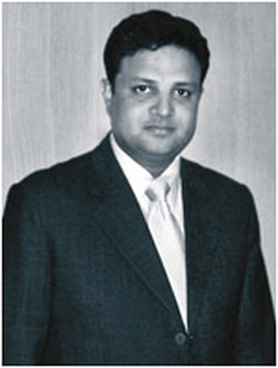 Naved Chaudhary, Head-Marketing Services, WYNN Telecom When was the last time you heard that a mobile handset seller had 300 service centers in place and had sold not even one phone? The answer is here and now. Welcome to Wynn Telecom, which will start retailing mobile handsets very soon, but already has the service network in place. 4Ps B&M meets up with Naved Chaudhary, Head-Marketing Services, to get the inside dope on the play
In the Indian handset manufacturing industry, which is already thriving and heavily cluttered – with 16 branded manufacturers – Wynn Telecom suspiciously seems to be just another player. The company, which will launch the Wynncom brand of mobile handsets in late May 2010, refuses to be christened thus. Naved Chaudhary, Head-Marketing Services for the company, in fact mentions that he now has concrete plans to ensure Wynn Telecom becomes India’s third largest Indian handset manufacturer by the end of this fiscal. In an exclusive interaction with 4Ps B&M, Naved gives us the evidence.
Straight-up, the Indian handset market is cluttered with the emergence of new brands. How do you plan to break the clutter with Wynncom?
I wouldn’t consider the current market scenario as a clutter. Rather, it has more to do with the emergence of Indian handset brands over the last two years. The same trend was also seen during the boom of the television industry when every second company started manufacturing TV sets and there was a plethora of brands trying to bait the customers. But within five years, the market was left with only four or five major MNC brands and three or four Indian brands that survived after the consolidation that took place in the consumer durables sector. Further, one must also understand that the Indian handset market is really huge and you need players to drive this growth. We can be guided by the fact that the air conditioning market is small as compared to the mobile handset market but still has about 20 odd brands. So why can’t there be as many brands in the handset industry? I accept that the shift is bound to happen from boys to men. Moving on to us, there are many firsts to the brand Wynncom, which would help us break the clutter. We are probably the first company to launch pan-India operations on day one itself with seven mobile handsets and more than 400 people on board. To me, the USP of Wynncom would be our 300+ people on ground doing selling and our 300+ strong company-managed service network centres (under a separate entity World Ace). We consider providing the service factor as an imperative for the success of any brand and we are working strongly towards providing that to customers.
But introducing seven handsets at the time of launch?
I can’t comment too much about the portfolio prior to the launch but would like to tell you that yes, we are launching operations with seven mobile handsets in the entry level (utility) and the upgrade level with qwerty keypad (for youth). All these mobile phones will be dual SIM phones and will have features such as large LCD displays, mega-pixel cameras, high quality wireless FM receivers, high efficiency batteries, expandable memory cards, torch lights, et al. But all this would be available at affordable prices only.
Take this seat-of-the-pants brand quiz. Which event has the hallmark brand of five intertwined circles? Which company is represented by a half-bitten apple? If you were to see ‘__Inside’, what name would be the first to hit across your minds? Or if you came across ‘__with a hole’, which mint-product would you remember? Brand names have been key to ensuring that products have gotten converted from simple physical entities into billion dollar spawning businesses. Developing unique brand identities and logos have been key to competitive leadership and market superiority – the reason why customers, say, might choose a Louis Vuitton instead of a Louis Philippe. Now consider this – here is a logo that’s circular in shape with the front shot of a steam engine well-equipped with the signature cow-catcher bovine guard as the centre-piece and the national emblem at the front that aims to convey a sense of national comfort. Obviously, Indian Railways, one of the largest behemoths amongst the government-run units didn’t suffer too many pangs of creativity while creating its original logo, one guesses. Now, give yourself one final test. When was the last time you bought an Indian Railways ticket purely because you were impressed by the brand identity and its logo? We know the answer – never! Not that anybody was too impressed with the logo of Indian Railways earlier, but suddenly, the Railways has decided that it’s time they changed their logo! A nationally released advertisement invited the public by asking them to participate in the competition (of creating a new logo). The blink-and-you’ll-miss-it advertisement (you don’t remember seeing it, right?) also exhorted the participants with a cash prize of Rs. 5 lakhs for the winning entry. But does it really make sense for the Railways to go for a logo change, when customers make no differential about the Railways based on the brand logo (but more by the price, reach and the quality of services offered). Shouldn’t Indian Railways then be working more towards making their strategic processes more efficient than towards branding, especially in a monopoly-like situation where there’s possible no competitor? An Indian Railways source shares with 4Ps B&M, “Railways is going for a logo change because of the competition that it is facing from the low-cost airlines. However, having said that, the kind of connectivity that Railways has vis-à-vis Indian roads is still immaculate.” Jehangir S. Pocha, Co-founder INX News, confirms the viewpoint to 4Ps B&M, “A logo change definitely conveys a very strong change that often an organization might require to convey.” For more articles, Click on IIPM Article.Source : IIPM Editorial, 2010. An Initiative of IIPM, Malay Chaudhuri and Arindam chaudhuri ( Renowned Management Guru and Economist). For More IIPM Info, Visit below mentioned IIPM articles.
IIPM B-School Detail
IIPM makes business education truly global
IIPM’s Management Consulting Arm - Planman Consulting
Arindam Chaudhuri (IIPM Dean) – ‘Every human being is a diamond’
Arindam Chaudhuri – Everything is not in our hands
Planman Technologies – IT Solutions at your finger tips
Planman Consulting
Arindam Chaudhuri's Portfolio - he is at his candid best by Society Magazine
IIPM ranked No 1 B-School in India
domain-b.com : IIPM ranked ahead of IIMs
IIPM: Management Education India
Prof. Rajita Chaudhuri's Website---------------------------------------------------------------------------------------------------------------
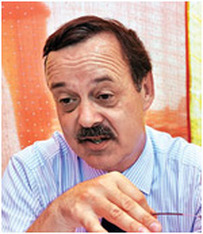 Jean Noel Bironneau, MD, Carrefour India
Precisely one year later since Bentonville Retailer Walmart opened its first wholesale cash-and-carry store in Amritsar (christened as Best Price Modern Wholesale) in a joint venture with Bharti enterprises, the world’s second largest retailer, France-based Carrefour announced that it would launch its first Cash & Carry outlet at Seelampur in Delhi in the next two-three months. With Germany’s Metro already operating in the Indian market since 2001, Carrefour is the third foreign player to set its foot into the C&C space. While Metro is still unable to hold a firm ground in the Indian market and is struggling with its venture, Walmart on the other hand has so far been successful in partnering with resellers, retailers and horecas (hotels, restaurants and catering sector). Eyes are now set on which way Carrefour heads – the Metro way or the Walmart way. Carrefour’s Delhi C&C store will cover an area of 55,000 sq. feet and house close to 30,000 SKUs, 90% of which will be sourced from India. Just like Walmart’s recent announcement of making India its global export hub, Carrefour too is currently sourcing goods worth $150-170 million for its international operations. Metro failed in the Indian market primarily because it could not sustain low prices given the high cost of infrastructure. On the face of it, Carrefour’s strategy is quite similar to that of Walmart’s. With Britain’s Tesco coming in a JV with Tata’s Trent by the year-end, the action has started.
 What is it about the Cannes Film Festival that the entire Indian film and fashion fraternity goes berserk about? Agreed that it is one of the world’s oldest and most prestigious film festivals, but unfortunately it has been reduced to an elongated event devoid of major celebrities. Worse, Cannes opening events and showcase screenings have now become the sauntering joints of the had-beens rather than the now and present – leave the likes of Aishwarya Rai, who looks as dazzlingly stunning as possible. Talking about that, even the Indian representation slips in Cannes. Unlike last year, when the entire spotlight was on Slumdog Millionaire (which, anyway, was a Brit-flick), in the ongoing 63rd Cannes Film Festival, the tally of Indian films is less than impressive with Anurag Kashyap’s Udaan being the only ‘Official Selection’ in the ‘Un Certain Regard’ category at Cannes. However, other film festivals like the San Francisco International Film Festival (held in February 2010 with 12 Indian films participating), Belgrade International Film Festival (showcased Gulaal, Dev.D and Delhi 6), the Phuket Film Festival (to be held in June 2010 and will screen Harishchchandrachi Factory, 3 Idiots and Chandni Chowk to China), et al, are stealing the show. It’s time Cannes retrospects on whether the low attendance was because of the volcanic ash syndrome or because people simply have grown weary of the affair. For evidence, compare the high profile attendance at the opening ceremony of the Oscars with what happens here.
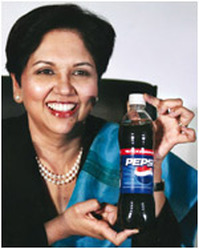 PepsiCo and AB-InBev’s media buying deal in US is said to aim at cost cuts but the threat of others following a similar route might make US media reject it completely
The town of Hoegaarden (pronounced ‘whogarden’) in the Flanders region of Belgium, named much earlier, is virtually a namesake to the iconic spiced wheat or “white” beers produced there since medieval times. The industry, a sacred tradition in Hoegaarden and the biggest employer in town, flourished for over 6 centuries. But in 2005, InBev, the world’s largest brewer and Hoegaarden’s owner since 1985, decided to close down HoeGaarden Brewery forever. But the quick buck bankers had missed the recipe. The beer is made from a rare yeast that is difficult to cultivate and keep alive. The proposed shift of brewing operations to nearby Jupille boomeranged as the desired quality of white beer couldn’t be achieved. The European media lambasted the beer giant for its blunder while brewing resumed in Hoegaarden in 2007. It drew further flak from the media which was at loggerheads with InBev. Since then, the brewer’s camaraderie with the media has remained topsy turvy. The icing on that relationship came recently, when Annheuser Busch–InBev announced a recent deal with PepsiCo to make combined pitches for their media buying – not surprisingly, many in the press police smelled cartelization!
The pact is part of a “joint-purchasing agreement” the two signed in October 2009 aimed to cut costs on items such as travel, computers and office supplies. Barely 3 months had passed and these two – amongst the biggest advertisers in US – tightened their embrace to march in tandem for buying their media for their massive advertising campaigns. A sneak peek into the kind of bucks in the reckoning reveals huge numbers. Apart from the umbrella figure of $1.15 billion as the total media spending of the two entities combined, $490 million was spent on network TV, $182 million on cable, $194 million on magazines and nearly $70 million on outdoors. Importantly, the $1 billion plus media spend number is the highest in the four categories the 2 giants currently collaborate in.
PepsiCo has been among the top 20 advertisers in US for quite some time while AB-InBev holds more than 50% of US beer market and is the biggest advertiser in its category. The single-most significant ad spot that the firms aim to target at a reduced rate is SuperBowl, the most watched telecast on American TV almost every year, which thus commands stratospheric spot rates of $3 million for a 30 second ad spot during the game’s telecast. Although, this year, PepsiCo did not advertise during the Superbowl owing to the aftereffects of recession, its brand Doritos did.
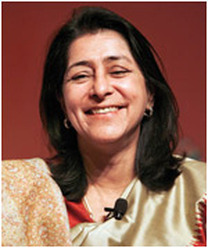 They have carved a niche for themselves in the Indian banking industry; but it just seems that they’re about to break free and takeover the Indian market like never before. by Deepak Ranjan Patra
May 25, 2010 was a landmark day, not only for Indian stock market or banking sector, but also for all foreign companies operating in India. Standard Chartered Plc opened an Indian Depository Receipts (IDRs) for subscription on this day. So what’s the big deal? It’s the first IDR in India by any international company in the history of India’s existence! Before you break into a diplomatic applause, the fact is that Stanchart (if we may) is not spectacularly huge currently. Consider this – the IDR issue is for a bank, which has just 90 offices, 7,825 employees, and a top line of Rs.19 billion in India. And yet, it is aspiring to raise Rs.33.75 billion from the market! But for every critic, there’re ten supporters, and vociferous ones. One obviously being Peter Sands, Group Chief Executive, Standard Chartered, who says, “Standard Chartered was established in India over 150 years ago, and this heritage is vitally important to us as we continue to grow our market visibility and brand presence in one of our largest markets. I am immensely proud that it is Standard Chartered listing the first ever IDR.” Honestly, Stanchart is not the only one in the league. Over the last few years, bosses of many global banking giants operating in India, if not all, have developed a similar business confidence over their Indian operations. After all, despite being paralysed by our regulatory controls and restricted to just 300 branches (March 2009), the 30 foreign banks control 5% market share in terms of deposits as compared to 95% controlled by all other banks through 64,028 branches, showcasing 10 times higher efficiency. However, there too exists a strong line of demarcation, as the top 5 foreign banks – HSBC, Standard Chartered, Citi, Deustche Bank and RBS – control 82.7% of the total market share enjoyed by the foreign banks. Even their profit margins are far better than the industry average for the last few years.
Going by what industry experts have to say, it’s just the three words – technology, innovation and quality service. Prashant Singh from Royal Sundaram shares with us, “As the outreach is enlarged in the India banking industry, with the increased number of banks and wider network, the customer demands convenience, comfort, speed, cost- effective and quality services.”
While foreign banks outpaced their Indian peers on all parameters including loans, deposits & CASA, their credit related activities took a beating, thanks to the downturn Unlike their volume-driven Indian counterparts, foreign banks in India have been predominantly characterised by their limited presence across the nation. As on June 2009, 32 foreign banks comprising 293 branches, constituted a mere 0.5% of the total branch network. Riding on the competitive edge spelt by the use of high-end technology, a customer-centric approach and innovative, diverse product offerings, these banks have typically set shores in metropolitan regions (almost 80% as compared to 35% new Indian private banks, 20% old private banks & 20% PSU banks). But the restricted spread has in no way limited the prospects for these players who have registered steady growth on all parameters. Despite the 0.5% share of the network, the market share stands at an impressive 6%. The 32 foreign banks cumulatively accounted for 5.5% of total system advances, 5.3% of system deposits, 18% of operating profit and 14% of system net profit in FY09. This is commendable given the low penetration. This is largely the result of an improving economic environment and pick-up in credit activities. In contrast, the major factor that has adversely affected the foreign banks is their concentration on the retail segment, which was truly down and out during the downturn of the global financial crisis. The consequence is obvious – their loan book went up by a mere 3% while the Indian private counterparts saw a 12% rise during the same period. While the strong branding, better customer service & product innovation initially helped them make strong inroads into retail & SME lending, the resultant book seasoning turned a large part of these loans into NPLs, thereby resulting in higher provisioning & deterioration in asset quality. The balance sheet story has been pretty obvious. While foreign banks outpaced its Indian peers (PSU & private banks) on all parameters including loans, deposits & CASA, the credit related activities took a beating, thanks to the downturn. For more articles, Click on IIPM Article.Source : IIPM Editorial, 2010. An Initiative of IIPM, Malay Chaudhuri and Arindam chaudhuri ( Renowned Management Guru and Economist). For More IIPM Info, Visit below mentioned IIPM articles.
IIPM B-School Detail
IIPM makes business education truly global
IIPM’s Management Consulting Arm - Planman Consulting
Arindam Chaudhuri (IIPM Dean) – ‘Every human being is a diamond’
Arindam Chaudhuri – Everything is not in our hands
Planman Technologies – IT Solutions at your finger tips
Planman Consulting
Arindam Chaudhuri's Portfolio - he is at his candid best by Society Magazine
IIPM ranked No 1 B-School in India
domain-b.com : IIPM ranked ahead of IIMs
IIPM: Management Education India
Prof. Rajita Chaudhuri's Website---------------------------------------------------------------------------------------------------------------
|





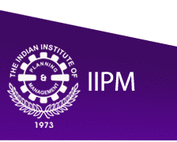
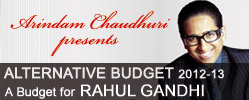
 RSS Feed
RSS Feed